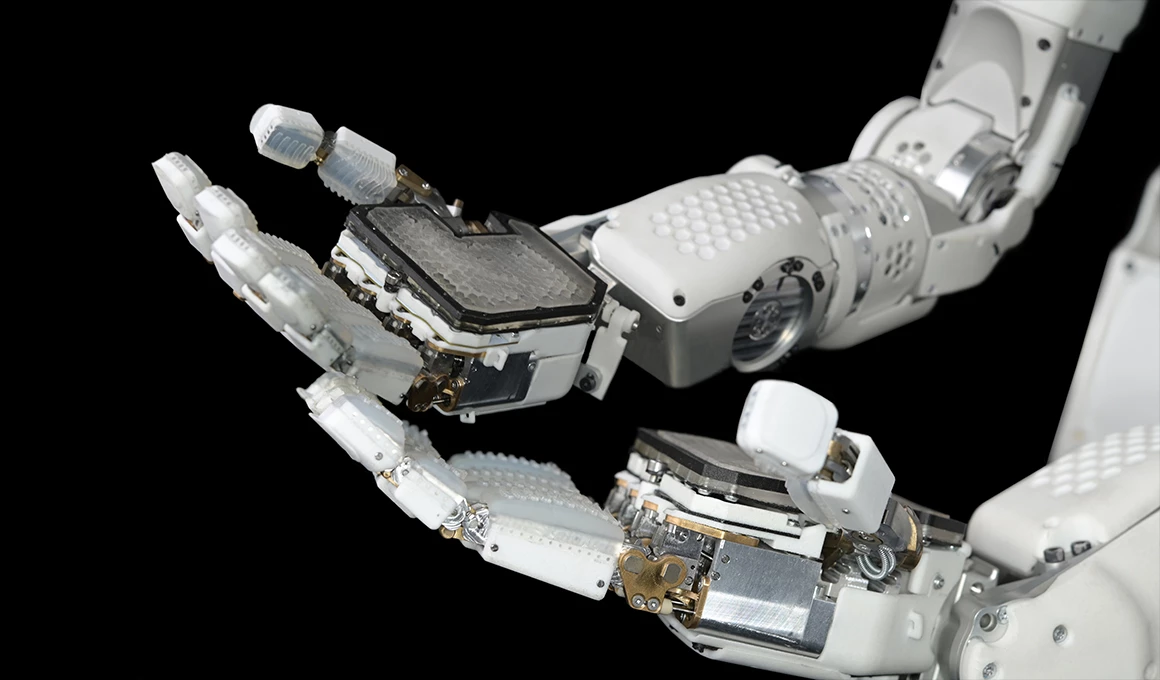Canada's Sanctuary AI has revealed a new humanoid robot, shooting for the "world's first human-like intelligence in general purpose robots (GPR)." Phoenix builds on some very impressive earlier work and a neat "piloted" approach to training.
The humanoid form certainly isn't the most efficient shape for a useful robot – but it's an excellent shape for a robot that's designed to take over as many human tasks as possible. The modern world is constructed mainly for bipedal creatures around a certain height, with five-fingered hands and opposable thumbs, so that's the form GPRs from companies like Tesla, OpenAI, Figure and others will be taking.
Sanctuary already has plenty of experience with upper-body humanoid robots – indeed, back in March, the company ran a week-long pilot trial for a waist-up general-purpose robot at a Canadian Tire Corporation store, claiming that the bot correctly performed 110 retail-related tasks including picking, packing, cleaning, tagging, labeling, folding and more.
This kind of flexibility is absolutely key to Sanctuary's vision; these robots eventually need to be able to do anything a human worker can. So the company is building them around a training concept pioneered at Kindred, an earlier company founded by Sanctuary co-founder Suzanne Gildert, and run by Sanctuary co-founder and CEO Geordie Rose, before being sold to Ocado in 2020.
Essentially, the robots learn each task through telepresence. A human operator wearing a VR headset is rigged up to a motion-capture rig, seeing what the robot sees through its camera systems and feeling what it "feels" through its sensors. The operator's actions control the robot, while the robot's AI systems watch, feel and learn.
As the AI identifies patterns of movement, it begins building a repertoire of task-relevant actions, and by a certain point, it's ready to take over a given task autonomously. In the case of the Canadian Tire Corporation pilot, pre-training was done at Sanctuary headquarters, in labs designed to accurately recreate the CTC working environment.
But the telepresence tech is just as happy to run over a long-distance internet connection, and the wording of the press release doesn't specify that everything – or indeed anything – undertaken on site was done autonomously. Unfortunately, Sanctuary's piloted learning tech means that it's impossible to tell whether its robots are acting autonomously or via telepresence as they show off their abilities in the company's many videos, including the "60 tasks in 60 seconds" video embedded below.
In a blog post titled "Honesty in Technology Communications, Marketing and Storytelling" back in April, the company admits that "in most of the videos we will post for 'Robots Doing Stuff,' the robots are being teleoperated by a person."
So while these videos are good demos proving the capability of the hardware across a range of different tasks, it's hard to say where the heck things stand with the really important bit – the AI software and its ability to mimic tasks in a flexible and useful manner.
Still, Sanctuary has pressed ahead and stuck a bottom half on. The new Phoenix GPR stands 170 cm (5.57 ft) tall and weighs 70 kg (155 lb). It can carry a payload up to 25 kg (55 lb), and its hands are works of art with 20 degrees of freedom and haptic technology to give it something approximating a sense of touch.
It runs on a "cognitive architecture and software platform" called Carbon, which not only incorporates the piloted learning and reinforcement stuff, but rolls in Large Language Model AIs so it should eventually be able to converse as well as ChatGPT and take instructions in natural language.
Sanctuary goes so far as to say that Carbon "enables Phoenix to think and act to complete tasks like a person," complete with planning, agency and goal-seeking behaviors. That all sounds a fair way off from where we're sitting; it's one thing for massive LLMs like GPT to be demonstrating extraordinary control of language, but another for similar neural models to be learning how to be embodied entities working toward physical goals. It's definitely coming, but we're not holding our breath just yet.
One thing Phoenix curiously can't do at the moment, and appears to have no current plans to learn, is walking. The robot has legs, but Sanctuary has set it up on a wheeled platform, and according to an interview with IEEE Spectrum, seems perfectly happy with that arrangement until such time as another company comes up with a suitable walking algorithm that can be bought, licensed or open-sourced into the bot. Until then, it'll roll around at a top speed of 4.8 km/h (3 mph).
Now, you could say that's clever business, since the more valuable part of this enterprise is certainly going to be the robot's ability to perform a range of different useful work tasks. Sanctuary explains in another blog post that "value as a worker is not primarily defined by legs." But something about a robotics company that's not even interested in the challenge of walking does feel a bit odd.

Either way, AI-driven humanoid labor-bots are very much the flavor of 2023, and Phoenix's hands alone make it a worthy entrant to the field. Plenty of people will find jobs for this thing with or without legs if it can learn to make itself useful. Funded to the tune of over US$100 million, Sanctuary is in with a shot. Definitely a team to watch.
Source: Sanctuary AI





